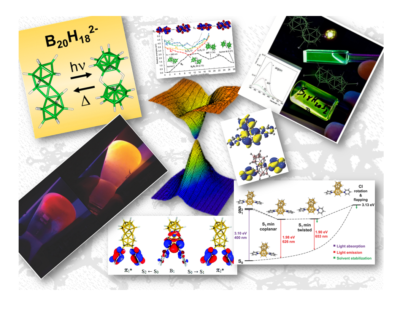A multiconfigurational quantum-chemistry standpoint on the interaction of boranes with light
Daniel Roca-Sanjuán,a Antonio Francés-Monerrisa,b
a) Institut de Ciència Molecular, Universitat de València, Catedrático José Beltrán Martínez 2, 46980 Paterna, Spain.
b) Laboratoire de Physique et Chimie Théoriques, Université de Lorraine, CNRS, Nancy F-54000, France.
Multiconfigurational quantum chemistry (MCQC) [1] is a useful computational tool to explore the physical and chemical properties of the excited electronic states originated in light-matter interactions. Radiationless decay mechanisms, luminescence and triplet population efficiencies or photo-reaction phenomena can be described by MCQC with a high enough level of accuracy, which is possible because the technique correctly describes the open-shell electronic configurations of the excited states and the complex nature of state crossings. During the last five years, we have used MCQC to provide a rationale on the distinct luminescence properties of pure boron hydrides and composites with organic components [2-6]. More recently, we have also described the thermal and photochemical conversion mechanisms between isomers of boranes [7]. In this contribution, we shall review the most relevant findings and we will establish relationships between the experimental spectroscopic/photochemical observations and MCQC outcomes making use of theoretical objects such as conical intersections and singlet-triplet crossings.
References
[1]. D. Roca-Sanjuán, et al., WIREs. Comput. Mol. Sci. 2012, 2, 585.
[2]. J. M. Oliva, et al. In: Boron – The fifth element, 2015, Eds. D. Hnyk, M. McKee, Vol. 20, pp. 97-119.
[3]. M. G. S. Londesborough, et al., Adv. Opt. Mat. 2017, 5, 1600694.
[4]. M. G. S. Londesborough, et al., Dalton Trans. 2018, 47, 1709.
[5]. M. G. S. Londesborough, et al., Inorg. Chem. 2019, 58, 10248.
[6]. J. Macháček, et al., Phys. Chem. Chem. Phys. 2019, 21, 12916.
[7]. A. Francés-Monerris, et al., J. Phys. Chem. Lett. 2019, 10, 6202.

